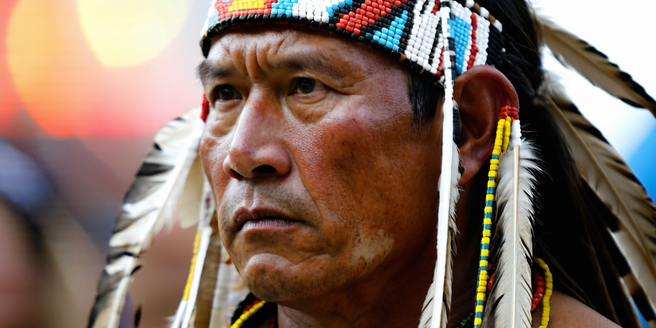Tribal Benefits For Native Americans

Understanding Tribal Sovereignty
| Concept | Description | Importance |
| Nationhood | Tribes possess a unique legal status as sovereign nations. | Ensures self-governance. |
| Self-Governance | Ability to govern themselves independent of outside control. | Fosters cultural and political autonomy. |
| Law and Order | Tribal laws govern within reservation boundaries. | Preserves traditional legal systems. |
| Federal Trust Responsibility | U.S. government must protect tribal lands, assets, resources. | Provides security and sustenance. |
| Consultation Rights | Government must consult with tribes on actions affecting them. | Ensures inclusive decision-making. |
| Economic Autonomy | Tribal authority over economic development and resources. | Encourages sustainable community growth. |
Healthcare Access and Improvements
Healthcare access for Native Americans has significantly improved through targeted programs. The Indian Health Service (IHS) plays a crucial role by providing comprehensive healthcare services tailored to the needs of indigenous communities. Investments in infrastructure and healthcare facilities enhance service delivery, offering preventive, primary, and specialty care across tribal areas. These efforts focus on reducing health disparities, addressing prevalent conditions like diabetes, and improving maternal and child health. By improving healthcare access and quality, these initiatives contribute to better health outcomes for Native American populations, ensuring that cultural considerations and traditional healing practices are respected within healthcare delivery. Furthermore, partnerships with local authorities and healthcare providers aim to expand outreach and provide health education, thereby fostering a healthier community and reducing the burden of chronic illnesses that have historically affected these populations.
Education Opportunities and Scholarships
Investing in education is pivotal for empowering Native American youth and building future leaders. Federal and tribal governments have established scholarship programs and educational initiatives to support students at various levels. These programs aim not only to provide financial assistance but also to facilitate access to culturally relevant education. From early childhood education to higher learning opportunities, these initiatives are designed to preserve cultural heritage while promoting academic excellence. Institutions that serve Native American students offer academic support, mentorship, and career counseling to ensure success. By focusing on educational achievement, these efforts help reduce gaps in educational attainment and enable Native American students to pursue various educational paths and career opportunities, ultimately fostering economic independence and cultural resilience.
Economic Development Initiatives
Economic development is an essential aspect of improving living standards in tribal communities. Tribes are leveraging their sovereignty to create economic opportunities by investing in diverse sectors like tourism, energy, and agriculture. Tribal-owned businesses, partnerships, and enterprises contribute to building wealth, creating jobs, and generating revenue. Federal programs support these initiatives by providing grants, financial resources, and technical assistance. Such economic activities are integral in fostering sustainable development that is aligned with cultural values and community needs. By empowering tribes through economic development, these initiatives aim to reduce poverty, enhance infrastructure, and improve the quality of life for tribal members. The holistic approach to economic development considers environmental stewardship, ensuring that growth does not compromise cultural landscapes or natural resources.
Housing Assistance and Programs
Access to adequate housing remains a concern for many Native American communities, with initiatives underway to address this challenge. The U.S. Department of Housing and Urban Development (HUD) offers programs geared towards improving housing conditions in tribal areas. Through grants and funding, tribes can develop sustainable housing projects, renovate existing structures, and address overcrowding issues. These programs are instrumental in fostering a sense of community by providing safe, affordable, and culturally appropriate housing solutions. Collaborative efforts between federal, state, and tribal agencies focus on increasing homeownership and improving living environments, which are fundamental components in enhancing the quality of life and ensuring the welfare of Native American families. By investing in housing development, communities can build resilient, vibrant neighborhoods that support social and economic well-being.
Cultural Preservation Efforts
Cultural preservation is a cornerstone of maintaining Native American identity and heritage. Across the United States, tribes are actively engaging in efforts to safeguard their languages, traditions, and historical sites. Federal grants and partnerships support initiatives that document and revitalize indigenous languages, preserving them for future generations. Museums, cultural centers, and educational programs play a crucial role in celebrating and teaching Native American history and culture. These efforts also aim to rectify historical narratives and provide authentic representations of tribal histories. By fostering cultural pride and resilience, preservation initiatives empower communities, ensuring that traditions are not only remembered but actively practiced and passed on. Acknowledging the importance of cultural preservation is vital in supporting the identity and autonomy of Native American communities.
Legal Rights and Protections
Native American tribes possess distinct legal rights and protections outlined in treaties, federal laws, and court decisions. These rights encompass self-determination, land sovereignty, and treaty enforcement. Legal frameworks like the Indian Civil Rights Act and the Tribal Law and Order Act strengthen these protections by addressing jurisdictional complexities and ensuring justice in tribal court systems. Efforts to uphold tribal sovereignty require cooperation between federal, state, and tribal governments. Indigenous rights advocates work towards reinforcing these legal protections and addressing infringement issues in areas such as land disputes, resource management, and sovereignty violations. By safeguarding legal rights, these efforts contribute to empowering tribal communities, ensuring they can govern themselves, manage their resources, and preserve their cultural heritage while navigating contemporary challenges.
Environmental Stewardship and Land Management
Environmental stewardship is integral to Native American life, reflecting their deep connection to the land. Tribes are proactive in land management practices that sustain ecological balance and protect natural resources. Collaborative conservation efforts with governmental and non-governmental organizations focus on habitat restoration, wildlife protection, and sustainable resource use. These initiatives aim to address environmental challenges such as climate change and pollution, ensuring healthy ecosystems for future generations. Traditional ecological knowledge is increasingly recognized for its value in modern environmental management, promoting practices that harmonize cultural traditions with conservation goals. By prioritizing environmental stewardship, tribes demonstrate leadership in sustainable living, aligning development with respect for the natural world and reflecting their values of harmony, balance, and respect for all living beings.
Support for Small Businesses and Entrepreneurs
Small businesses are the cornerstone of economic development in tribal communities, fostering innovation and self-sufficiency. Tribes provide support through business incubators, micro-loan programs, and entrepreneurial training, empowering individuals to start and grow their enterprises. Federal programs, such as those offered by the Bureau of Indian Affairs, provide grants and funding opportunities to stimulate economic activity. These efforts enhance community resilience by generating employment, increasing access to goods and services, and building a diversified economic base. Entrepreneurs also play a critical role in preserving cultural heritage by incorporating traditional crafts and knowledge into business models, supporting cultural revitalization alongside economic growth. Through entrepreneurship, tribes can build sustainable economies that reflect their values, fostering a cycle of prosperity and innovation within indigenous communities.
Challenges Facing Tribal Benefits Implementation
Despite numerous initiatives, implementing tribal benefits continues to face challenges. Bureaucratic hurdles, limited funding, and policy inconsistencies can hinder progress, affecting the delivery and effectiveness of programs designed for Native American communities. Ensuring equitable access to resources and overcoming systemic barriers requires persistent advocacy and collaboration between tribes and governmental entities. Addressing these challenges involves emphasizing culturally competent policy-making and inclusive decision-making processes that respect tribal sovereignty. Additionally, continuous monitoring and evaluation are essential to adapt programs to community needs and address any gaps in service delivery. Efforts to improve transparency and accountability are key in strengthening the trust and relationship between tribes and federal agencies, ultimately enhancing the effectiveness and reach of tribal benefits.
